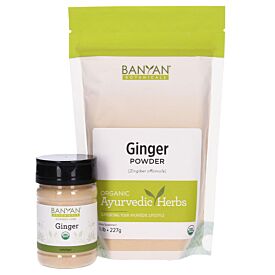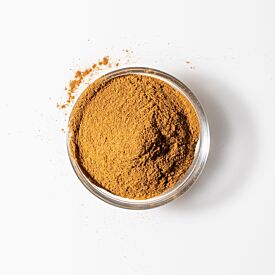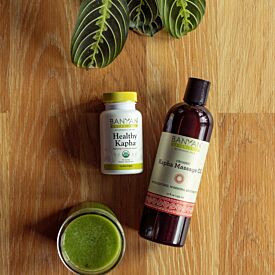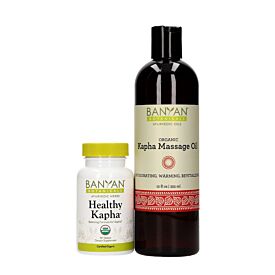Creating a Winter Sanctuary
Winter has settled in. Although here in Arizona, she looks nothing like the winters of my childhood. I grew up in a suburb of Chicago. My two sisters and I used to whine to our thrifty father that we couldn’t get out of bed until he turned up the heat, teasing him that overnight icicles had formed in our hair, and, leaving the warmth of our beds, we would surely freeze and he would be left childless.
“Come in, she said, I’ll give you shelter from the storm.”
Interfacing with nature outwardly and inwardly to reap the benefits of a balanced life is one of the most profound gifts of Ayurveda. Through every season, our relationship to nature shifts, and during the winter we may find ourselves indoors more than out. Seeking shelter from winter’s elements is a natural tendency for most beings, and, ultimately, keeps us alive. Shelter is a place or a practice that gives protection.
The Qualities of Kapha in Nature
In the winter, the qualities of cold, cloudy, damp, heavy, slow-moving, and dark affect our physical and mental experiences. These qualities may provoke kapha imbalances, leading to more mucus and bronchial congestion, which in turn may create greater respiratory discomfort and complaints. Mentally, without the appropriate activity and supportive diet, the season may invite loneliness, isolation, intense emotions, and lethargy.
The quality of cold is generally constrictive, and this aspect of winter constricts the skin, pores, and connective tissues. Through this constriction, our bodies retain the heat that would normally be dispelled through these tissue layers. When heat is drawn in from the periphery, this may heighten agni (the digestive fire), increasing hunger and the desire for more wholesome foods. In this way, winter’s cold can act as a catalyst to find the things that sustain us, supporting quality nourishment and a robust immune system.
Our diets and routines will also naturally shift, as the darker days and slow-moving quality of winter allow for a gentler and slower daily rhythm.
Winter mornings can sometimes bring an accumulation of kapha dosha, manifesting as congestion or general heaviness. The following is a kapha-pacifying tea recipe* recommended by my teacher, Dr. Lad:
- ½ teaspoon ginger powder
- ½ teaspoon cinnamon powder
- Small pinch of ground clove
Add to 1 cup of hot water, let it steep, then strain and drink.
*This is not recommended for those with elevated pitta. If you’re not sure if pitta is elevated, take the Ayurvedic Profile™ quiz.
The Sanctuary of Self-Care
One of my favorite shelters is the Ayurvedic practice of abhyanga. Abhyanga is a traditional method of oiling the skin, scalp, and orifices of the body prior to bathing. The oil may be a simple, organic Sesame Oil, which is slightly heating, or you may make or purchase an herbal oil that will boost the power and efficacy of the practice. Ayurveda believes this practice helps to protect one from inclement weather, unhealthy atmosphere, wrinkles, dry or rough skin, fatigue, and sluggish digestion. It also supports the nervous system and helps to promote restful sleep. Another name for the practice of oil massage is snehana. This word also means love. Self-love and acceptance are greatly increased by abhyanga, and this love is the first doorway to true spirituality.
Warm Your Body
Harmonizing with the season is as easy as what many of us learned in our childhood when someone who cared for us dressed us appropriately. Wearing a hat in winter can keep us a whopping 40 percent warmer. Covering our ears is extremely helpful as they are vulnerable to cold weather and wind. There are many tiny bones in the architecture of the ears which can easily be disturbed by the cold wind.
Even in sunny Phoenix, Arizona, my very recent new home, there have been many gray days. During winter, gray is a dominant color in nature, as well as white and black. An easy way to counter these dominant monotones is to bring in some warmth by wearing clothing that includes orange, red, and yellow tones; eating foods that contain these colors; and by participating in activities that warm your soul. These are enlivening to the visual and physical senses and help to expand our feelings and awareness.
A heavier winter diet and more restful hours spent indoors are nicely paired with bold exercise that promotes circulation. Ayurveda says this is a time to move and build strength and power through exercise—this provides the body the ability to shed the accumulation of dark, cold, and heavy tendencies. Warmth promotes circulation, and circulation promotes joy.
Warm Your Heart
Inviting friends over to gather around a fire is a wonderful activity for the extra hours of dark and cold outside. Eating homemade soups and stews and drinking draksha, an herbal wine that improves digestion, is a recipe for fantastic winter relationships! Creating a relaxed home atmosphere to connect with friends and family repairs and regenerates the heart. Other practices that can give refuge from the weather are developing a meditation practice, reading literature that engages the spirit, and paying attention to dreams. Of course, these activities are not exclusive to a great winter, but they do make use of the natural invitation of the season to turn inward.












